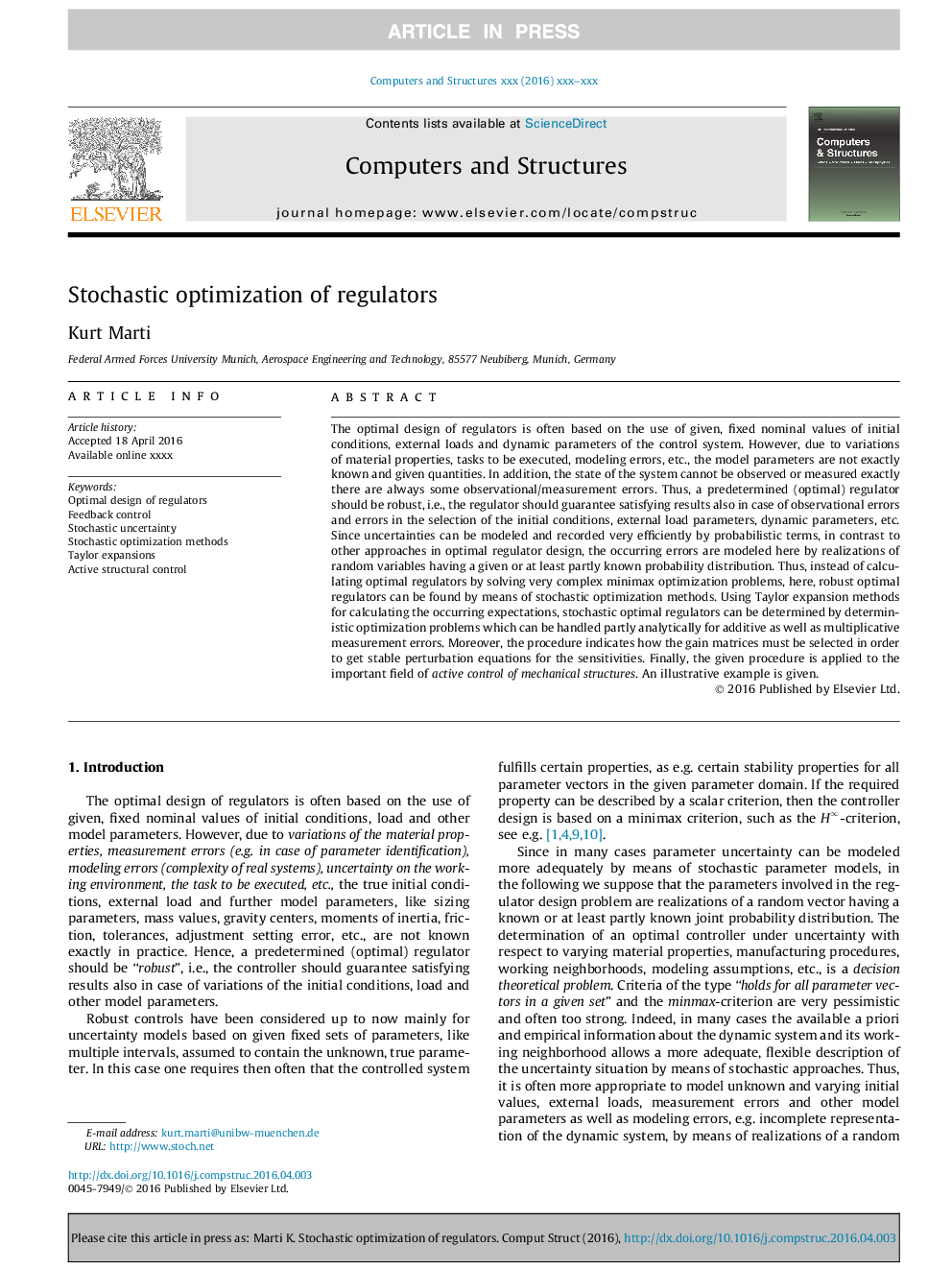| Article ID | Journal | Published Year | Pages | File Type |
|---|---|---|---|---|
| 4965806 | Computers & Structures | 2017 | 12 Pages |
Abstract
The optimal design of regulators is often based on the use of given, fixed nominal values of initial conditions, external loads and dynamic parameters of the control system. However, due to variations of material properties, tasks to be executed, modeling errors, etc., the model parameters are not exactly known and given quantities. In addition, the state of the system cannot be observed or measured exactly there are always some observational/measurement errors. Thus, a predetermined (optimal) regulator should be robust, i.e., the regulator should guarantee satisfying results also in case of observational errors and errors in the selection of the initial conditions, external load parameters, dynamic parameters, etc. Since uncertainties can be modeled and recorded very efficiently by probabilistic terms, in contrast to other approaches in optimal regulator design, the occurring errors are modeled here by realizations of random variables having a given or at least partly known probability distribution. Thus, instead of calculating optimal regulators by solving very complex minimax optimization problems, here, robust optimal regulators can be found by means of stochastic optimization methods. Using Taylor expansion methods for calculating the occurring expectations, stochastic optimal regulators can be determined by deterministic optimization problems which can be handled partly analytically for additive as well as multiplicative measurement errors. Moreover, the procedure indicates how the gain matrices must be selected in order to get stable perturbation equations for the sensitivities. Finally, the given procedure is applied to the important field of active control of mechanical structures. An illustrative example is given.
Keywords
Related Topics
Physical Sciences and Engineering
Computer Science
Computer Science Applications
Authors
Kurt Marti,
